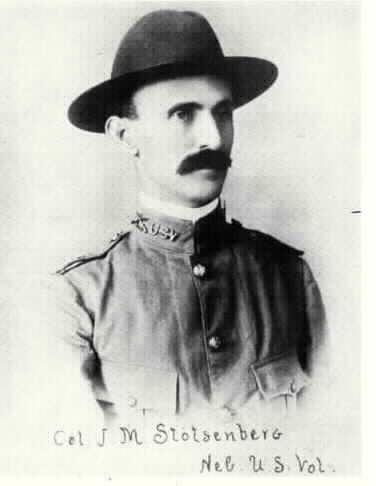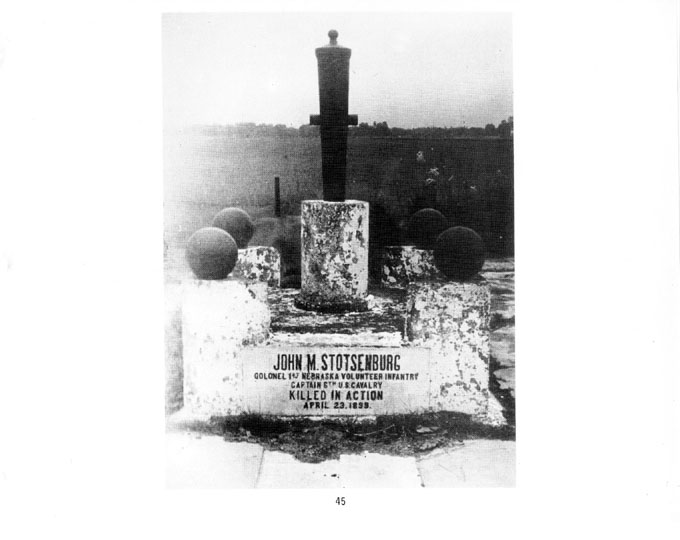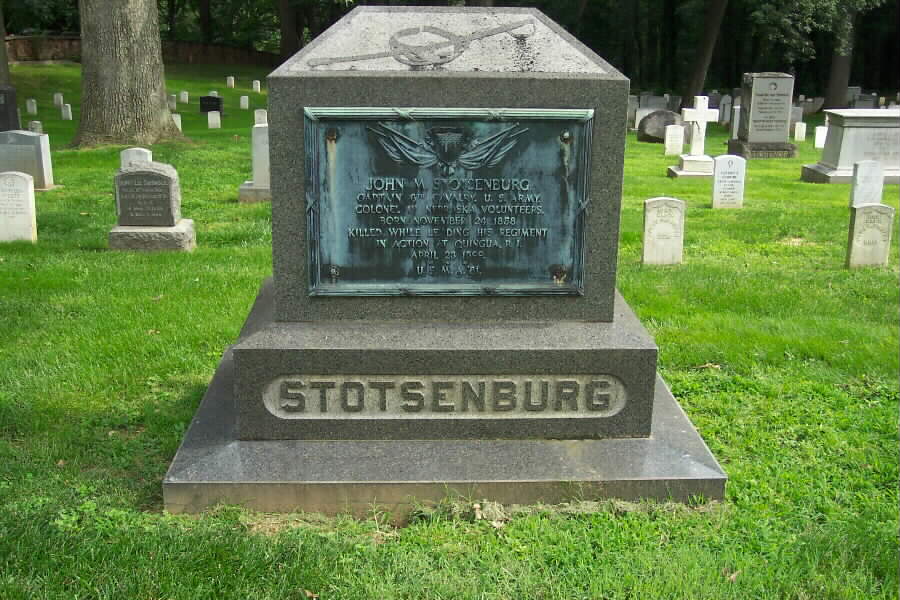Born on November 24, 1858, he graduated from West Point in 1881. He was a Colonel of United States Volunteers and Captain, United States Army.
He was killed-in-action in the Philippines Insurrection on April 23, 1899, while leading his regiment in action at Quingua, Philippines.
He is buried in Section 1 of Arlington National Cemetery. His wife, Mary LaTourette Stotsenburg (1863-1929), is buried with him.
FIERCE BATTLE WITH THE FILIPINOS
Six Killed and Forty-three Wounded on American Side
Rebels Were Finally Routed
Colonel Stotsenburg and Lieutenant Sisson of Nebraska Regiment Dead
Fourth Cavalry Loses Two Men
Enemy Fought Behind Breastworks Near Quingua – Thirteen of Their Force Killed
MANILA, April 23, 1899 – Four men of the Nebraska Regiment, including Colonel Stotsenburg and Lieutenant Sisson, and two men of the Fourth Cavalry were killed and forty-three wounded in an engagement at Quingua. The Filipinos retreated with small loss.
The engagement developed into a disastrous, though successful, fight. The insurgents had a horseshoe trench about a mile long, encircling a rice field on the edge of a wood.
Major Bell, with forty cavalrymen, encountered a strong outpost. One of his men was killed and five were wounded by a volley.
The Americans retired, carrying the wounded under fire and with great difficulty, being closely pursues, the fog enabling the enemy to creep up to them. Two men who were carrying a comrade were shot in the arms but they continued with their burden.
Major Bell sent for reinforcements to rescue the body of the killed cavalryman, and a battalion of the Nebraska Regiment, under Major Mumford, arrived and advanced until checked by volleys from the enemy trenches. The Americans lay about 800 yards from the trenches, behind rice furrows, under fire, for two hours.
Several men were sun struck, one drying from the effects of the heat, as they day there, waiting for the artillery to come up. Finally the Second Battalion arrived and then Colonel Stotsenburg, who had spent the night with his family at Manila, came upon the field. The men immediately recognized him and raised a cheer.
Colonel Stotsenburg deciding to charge as the cheapest way out of the difficulty led the attack at the head of his regiment. He fell with a bullet in his breast, dying instantly, about 200 yards from the breastworks.
Lieutenant Sisson fell with a bullet in his heart, the bullet striking him near the picture of a girl suspended by a ribbon from his neck. In the meantime the artillery had arrived and shelled the trenches.
The Filipinos stood until the Nebraska troops were right on the trenches, and then they bolted back to the second line of entrenchment's, a mile back.
The Nebraska Regiment lost two privates killed and had many wounded, including two Lieutenants.
The Iowa Regiment had several wounded. The Utah Regiment had one officer and three men wounded.
Thirteen dead Filipinos were found in the trenches. This loss was comparatively small on account of their safe shelter.
The Americans carrier the second trench with small loss and are holding the town tonight.
Colonel Stotsenburg had won a reputation as one of the bravest fighters in the Army. He always led his regiment and had achieved remarkable popularity with his men since the war began, although during his first Colonelcy, the volunteers who were not used to the rigid discipline of the regular troops, thought him a severe officer.
The loss of the Nebraska Regiment in the campaign is the greatest sustained by any regiment, and today's disaster has greatly saddened officers and men, who promise to take fierce vengeance in the next fight.
Quingua, the Philippine town from which the insurgents were driven, is one of the most important municipalities of the province of Bulacan, and, according the latest military map prepared for the use of the Adjutant Generals Officer in Washington, is three and a half miles northeast of Malolos, the nominal capital of the Filipinos, which was recently captured by General MacArthur. Quingua is eighteen and a half miles north of Manila. Its population numbers 7,500. Since the insurgents retreated from Malolos, many skirmished have occurred between that place and Quingua.
WASHINGTON, June 1, 1899 – The funeral of Colonel John M. Stotsenburg of the First Nebraska Regiment, who was killed in the Philippines, took place at Arlington National Cemetery this afternoon.
The Rev. S. J. Wallace was the officiating clergyman, and three troops and the headquarters band of the Third Cavalry participated in the funeral ceremonies. President McKinley, Secretary Alger and Adjutant General Corbin were present. Among the many tokens of esteem placed upon the grave were two handsome floral tributes from President McKinley and Assistant Secretary of War Meiklejohn.
STOTSENBURG, JOHN M
- COL/ CAPT 1ST NEB VOL 6TH US CAV
- VETERAN SERVICE DATES: Unknown
- DATE OF DEATH: 04/23/1899
- DATE OF INTERMENT: 06/01/1899
- BURIED AT: SECTION WEST SITE 1249
- ARLINGTON NATIONAL CEMETERY
STOTSENBURG, MARY LA TORETTE W/O JOHN M
- DATE OF DEATH: 04/23/1899
- DATE OF INTERMENT: 06/01/1899
- BURIED AT: SECTION W SITE 1249
- ARLINGTON NATIONAL CEMETERY
- WIFE OF JM STOTSENBURG
- COL 1ST NEB VOLS SP WAR
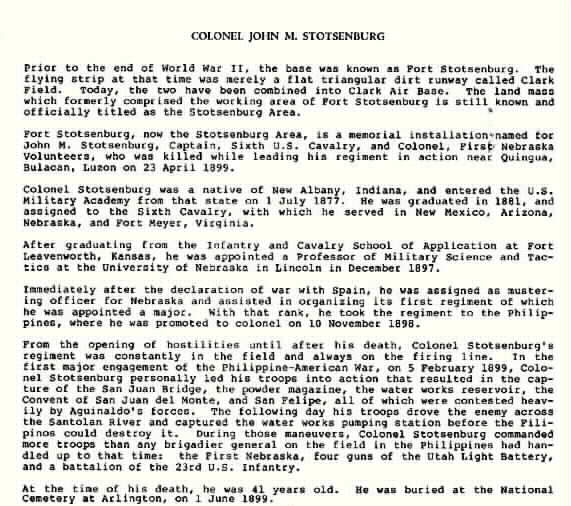
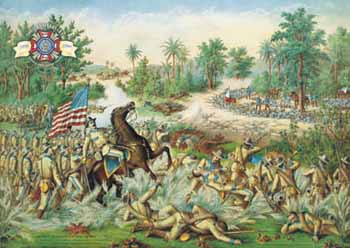
According to Elvid Hunt's “History of Fort Leavenworth 1827 – 1937”, (p-262), Stotsenburg Hall was named in honor of Captain John M. Stotsenburg, 6th Cavalry, class of 1897, Infantry and Cavalry School, killed in action, April 23, 1899 at Quinqua, Luzon, Philippine Islands.
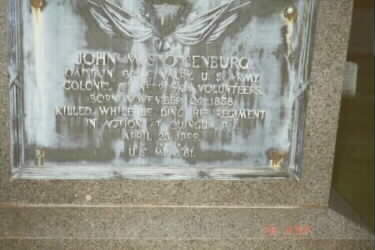
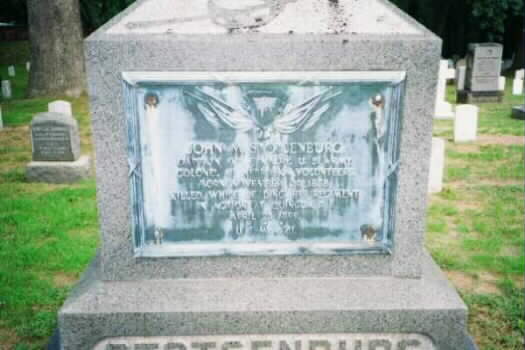
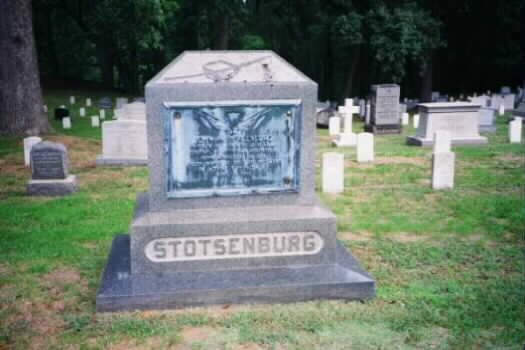
Michael Robert Patterson was born in Arlington and is the son of a former officer of the US Army. So it was no wonder that sooner or later his interests drew him to American history and especially to American military history. Many of his articles can be found on renowned portals like the New York Times, Washingtonpost or Wikipedia.
Reviewed by: Michael Howard

